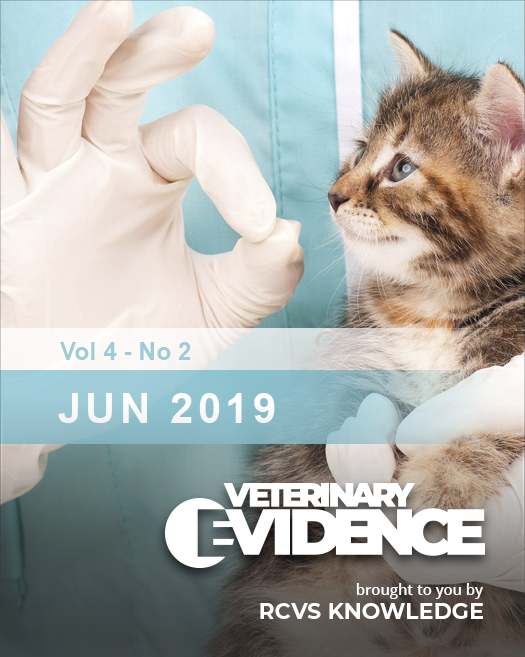DOI
https://doi.org/10.18849/ve.v4i2.207Abstract
PICO question
In dogs, what is the sensitivity and specificity of using ultrasound as a diagnostic test to identify meniscal damage?
Clinical bottom line
Although there are limited studies assessing the accuracy of ultrasound for detecting meniscal damage, it appears to be a potentially useful diagnostic test with reported sensitivity varying from 82–95% and specificity from 82–93% when compared to arthroscopy or arthrotomy findings. Experience of the ultrasonographer is also likely to be an important factor to consider.
![]()
![]()
References
Arnault, F., Cauvin, E., Viguier, E., Kraft, E., Sonet, J., and Carozzo, C. (2009) ‘Diagnostic value of ultrasonography to assess stifle lesions in dogs after cranial cruciate ligament rupture: 13 cases’, Veterinary and Comparative Orthopaedics and Traumatology, 22(6), pp. 479–485. DOI: 3415/VCOT-08-10-0103.
Franklin, S.P., Cook, J.L., Cook, C.R., Shaikh, L.S., Clarke, K.M., and Holmes, S.P. (2017) ‘Comparison of ultrasonography and magnetic resonance imaging to arthroscopy for diagnosing medial meniscal lesions in dogs with cranial cruciate ligament deficiency’, Journal of the American Veterinary Medical Association, 251(1), pp. 71–79. DOI: https://doi.org/10.2460/javma.251.1.71.
Mahn, M.M., Cook, J.L., Cook, C.R., and Balke, M.T. (2005) ‘Arthroscopic verification of ultrasonographic diagnosis of meniscal pathology in dogs’, Veterinary Surgery, 34(4), pp. 318–323. DOI: https://doi.org/10.1111/j.1532-950X.2005.00049.x.
License
Copyright (c) 2019 Peter Coss

This work is licensed under a Creative Commons Attribution 4.0 International License.
Veterinary Evidence uses the Creative Commons copyright Creative Commons Attribution 4.0 International License. That means users are free to copy and redistribute the material in any medium or format. Remix, transform, and build upon the material for any purpose, even commercially - with the appropriate citation.
